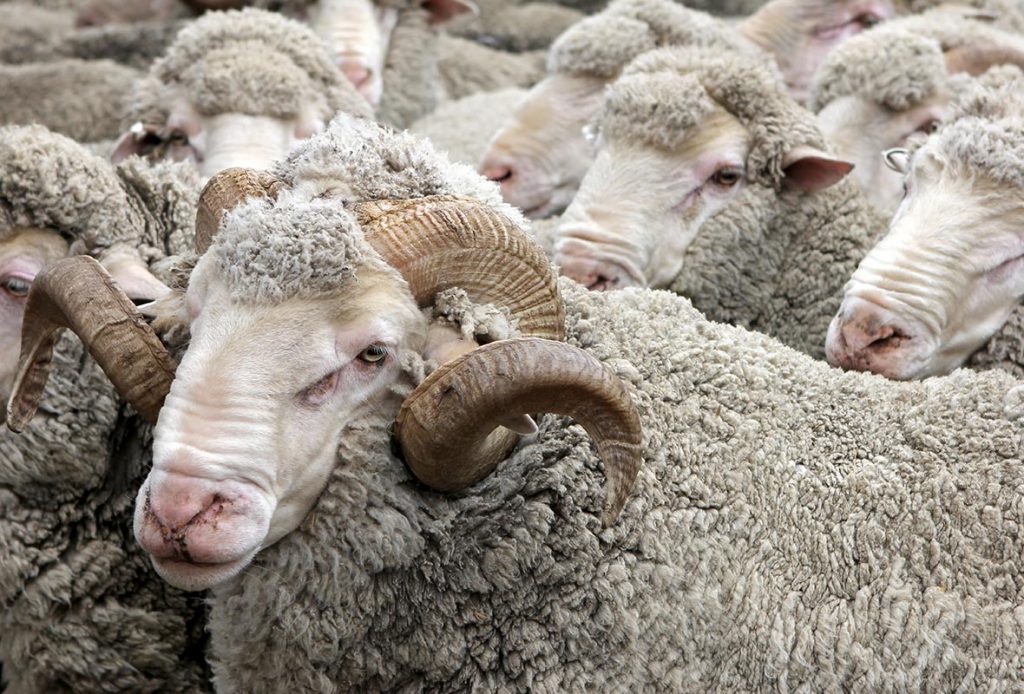Not just any wool

Soft, durable, transports moisture away, odour resistant and warming - what more could we possibly want? Sustainability of course.
We love wool here at Fjällräven. And for a ton of different reasons. Apart from its extremely functional properties, we are able to source it in ways that make a lot of sense from a sustainable perspective.
Functionality of wool
You probably know that wool can keep you warm when you are cold, and cold when you are hot. It is a heat regulator, due to its ability to trap air between its fibres. That’s what gives wool its ‘cosy’ reputation. Wool also transports moisture away from the body, and it's odour resistant. It is an incredibly functional material for outdoor garments which you want to last for a long time. It is also a very interesting material from a sustainability perspective. But it is important to be careful when sourcing wool and cautious about the kind of wool that we choose to use. That is why we have several different types of wool in our wool programme. All for different reasons.
But it is important to be careful when sourcing wool and cautious about the kind of wool that we choose to use. That is why we have several different types of wool in our wool programme. All for different reasons.
Traceable wool

In 2014 we launched our Down Promise - guaranteeing that we use only ethically sourced, fully traceable down in all our products. In 2015, we started looking into how we could achieve that with our wool products as well. As Johanna Mollberg, Sustainable Materials Manager explains “We can’t talk about the sustainability of our garments, without knowing about the welfare of the animals, the land use practices and economic viability of the farms we source from.” It is important to start the sourcing of fibers all the way back in the supply chain and connect with the farmers” Johanna adds In order to have wool which can comply with our strict criteria, we need to know the home of the sheep.” So we knew we had to change how we worked.
Our progress in traceability includes our partnership with the New Zealand Merino Company and their ZQ and ZQRX wool - they accredit and work with farms and ensure wool supply, quality and integrity for a variety of brands across the globe. But above all else, ZQ Wool’s main goals are about ensuring animal welfare, and environmental and economic sustainability. We get a certificate from ZQ Wool with all the names of the farms where our different types of wool come from, this includes a tracking number going all the way back to the farm. As Johanna continues “The farmers know their buyer and they know that we commit to their wool and treat it with respect. We all share the same vision and love for wool. And, of course, a love for the sheep and the land they live on.”
ZQ went one step further applying a regenerative approach to their wool growers and farming systems. The regenerative approach to earth's resourses differs greatly from the standard approach. Instead of using resources as if they are limitless, with little or no regard for environmental consequences, the regenerative model handles nature with care. Enriching and helping the environment instead of depriving it. Increasing biodiversity, improving the soil health and water cycle, and enhancing the ecosystems. At Fjällräven we have a saying for it; 'leaving base camp in better shape than we found it'. It is essentially about creating a better, kinder, more positive future for the planet. Read more about ZQRX wool here.
At Fjällräven we have a very strict animal welfare criteria for animal derived material. Further progress in this area means that we do not work with any farms practising mulesing - the painful practice of the removal of an area of wool bearing skin. Due to the way wool is commonly traded, it’s been extremely difficult to develop a fully-traceable global wool supply chain. As Erik Blomberg, the Head of Innovation at Fjällräven says, “Our goal is that all wool we buy is traceable, some wool types has been fairly easy to source while others have been harder.
Swedish wool
Swedish wool is an initiative which was born out of the fact that sheep meat farmers in Sweden treated wool as waste. The wool is collected from the sheep farmers in southern Sweden and on the island of Gotland, where the yearly shearing of sheep creates approximately 100 tons of wool. It is coarser, and doesn’t have the same fine fibres as the wool from wool-producing farms, but it still has the same properties that make wool a brilliantly functional material. After a lot of work and innovation, we were able to put some of that surplus wool to use in various Fjällräven jackets and parkas. We also use it to create the innovative backplate for the award-winning Lappland Hike 15 backpack.

Wool as a material has a big future ahead. That’s not just because it has so many of those functional needs that we require, but also because it is very interesting from a sustainability point of view. It is durable, when treated correctly. It can be recycled. And when it is at the end of its life, it can be circled back into something new. As Johanna adds “We are strong believers in the material. When sourced properly, from farms that respect the animals in a way that can be regenerative to the environment, there is a positive impact that is super exciting to investigate even more.”
Making traceable wool a reality
Knowing where our wool is from is the only way to know how the sheep are treated.
Defining Sustainability
Christiane Dolva Törnberg, Head of Sustainability, tells us what sustainability is, and how it impacts decisions.
